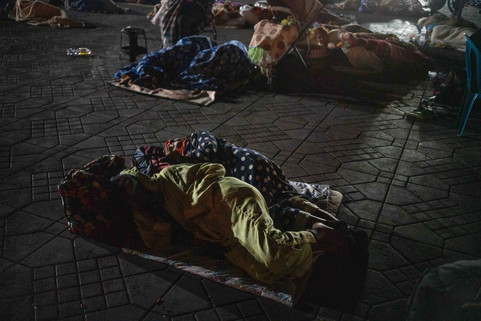Amidst the Rubble - The Aftermath of the Earthquake in Morocco
Photographs published by The Guardian, Le Point, Bild.
As harsh mountain winter looms in the earthquake-ravaged village of Tafeghaghte, nesteld on the High Atlas Mountains, 36-year-old Fatima Azem feels a growing sense of urgency while packing her family’s belongings into her cousin's car. "We can't wait for the reconstruction process. Our only option is to move to my cousin's home in Essaouira and start anew."
The earthquake that struck on September 9th, Fatima's agricultural family lost their home and livestock, which had been their primary source of income, as it was buried beneath the rubble of their village. Tragically, Fatima also lost her parents in the destructive tremors that leveled the entire village and claimed the lives of half of Tafeghagte's 200 residents. Now, survivors are compelled to reside in tents, much like thousands of others facing similar circumstances.
More than 3.000 people were killed and at least 59,674 houses were either damaged or destroyed, impacting over 300,000 people according to the UN, mostly from the marginalized agricultural Amazigh community living in mountainous douars, isolated from essential services such as healthcare and education.
As the dust from the earthquake settles, a poignant dilemma is unfolding in the remote corners of the Atlas Mountains. Faced with the prospect of a slow rebuilding process and potential relocation, the family of five, who belong to the Berber Amazigh minority, has reluctantly decided to migrate to an urban center, echoing the choices made by numerous others who are uncertain about their future in the Atlas Mountains. "We don't like the city lifestyle. We are attached to our village and will not give up on rebuilding our home if we are given the opportunity. However, with the harsh winter approaching, we feel we have little choice," Fatima explains.









